Books for professional education. Annotations by categories: General education, eduational psychology, educational sociaology, edcuational magagement, and other. See titles listed by categories in the overview.
Subject related recommendations.
General Education
by Jenny Anderson and Rebecca Winthrop. 352 pages.
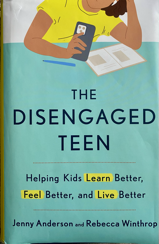
Adolescents are naturally curious and want to learn new things. School is their main way to do that, but many teens don’t like going to school. They’re either bored or feel overwhelmed. This is a big problem because it could hurt their future.
The authors discuss how teens are wired to learn and why they’re not doing well in school. They describe four different ways teens engage in learning, from being active and engaged to being disengaged and not learning at all.
They also include reasons why teens are not learning well and give parents, teachers, and government officials ideas on how to help them learn and succeed.
They argue that teens have special needs, so schools and other organizations need to change to make learning more relatable and help teens feel included in the curriculum's learning experiences.
For parents who often feel powerless to assist their children as they mature and become more independent, this book serves as a valuable resource on how to reengage both disengaged and stressed teenagers. It provides practical examples of actions to take and avoid in order to support their academic and emotional development.
by Josh Cowen. 148 pages.
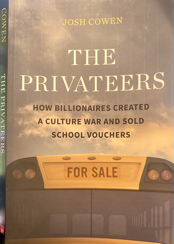
Presents the history of vouchers in the U. S.and how anti public education groups have used it to shape public opinion, policy, laws, and the legal system to move money from public education to private education with vouchers, scholarships, and other devices, in spite of strong evidence that these schools do not provide better learning as documented througout the book.
The author's claim these privateer's purpose is not to improve education, but to destroy public education. To achieve this the author identifies foundations, groups, and individuals who support the following.
- Milton Friedman desrcibes vouchers as a way to fund segregated schools and maintain segregation in 1954.
- Vouchers to support students who were never in public schools.
- Vouchers to subsidize private schools.
- Vouchersto reduce funding for public schools, which are in need of more funding, not less. Research shows funding struggling schools results in better achievement than funding voucher schools. See evidence for spending more.
- Less regulation of schools.
- Closure of the U.S. department of education.
- Religious freedom and the free exercise clause. See education and the law through the years.
- Demonizaton of schools with arguements for book censorhip, radical curriculum, sexual discrimination, liberal aagenda.
- Support parental choice. Voucher supporters switch to this arguement when they couildn't support improvement of learning for voucher recipients.
- Support legal challenges to support vouchers. See education and the law through the years.
- Target any runningfor office or in office who oppose school choice or freedom in education.
Evidence abounds that school spending matters.
- In just five years leading up to the writing of this book alone, study after study shows academic outcomes improve dramatically wit more spending. 48.
- 48. For an academic summary see C. Kirabo Jackson and Claire L. Mackevicius, "What Impacts Can We Expect from School Spending Policy? Evidence from Evaluations in the US," American Economic Journal: Applied Economics, 2023, https://www.aeaweb.org /articles?id=10.1257/app.20220279; for comprehensive media coverage of these results, including links to papers and reports, see Matt Barnum, "Does Money Matter for Schools? Why One Researcher Says the Debate Is 'Essentially Settled,'" Chalkbeat, December 17, 2018, https://www.chalkbeat.org/2018/12/17/21107775/does-money -matter-for-schools-why-one-researcher-says-the-question-is-essentially-settled; Matt Barnum, "4 New Studies Bolster the Case: More Money for Schools Helps Low-Income Children," Chalkbeat, August 13, 2019, https://www.chalkbeat.org/2019/8/13/21055545 I4-new-studies-bolster-the-case-more-money-for-schools-helps-low-income-students.
- Educational attainment levels rise.49
- 49. Rucker C. Johnson and C. Kirabo Jackson, "Reducing Inequality Through Dynamic Complementarity: Evidence from Head Start and Public School Spending," American Economic Journal: Economic Policy 11, no. 4 (2019): 310-49.
- Later-in-life incomes grow for workers who were children when policy makers decided to spend new dollars on their public schools.50
- 50. Johnson and Jackson, "Reducing Inequality."
- Poverty levels fall, and the chances that those children will commit future crimes and become incarcerated fall with them.51
- 51. Johnson and Jackson; E. Jason Baron, Joshua M. Hyman, Brittany M. Vasquez, "Public School Spending, School Quality and Adult Crime" (National Bureau of Economic Research working paper no. 29855, March 2022), https://www.nber.org/papers/w29855
- When states take on the task of spending equalization across local districts, intergenerational economic mobility improves.52
- 52. Barbara Biasi, "School Finance Equalization Increases Intergenerational Mobility," Journal of Labor Economics 41 no. 1 (2023): 1-38.
- And we know that when school spending declines-as research showing what happens in an economic recession has confirmed —the results are equally apparent in the opposite direction: cuts to public school funding stalls academic progress. 53
- 53. C. Kirabo Jackson, Cora Wigger, and Heyu Xiong, "Do School Spending Cuts Matter? Evidence from the Great Recession," American Economic Journal: Economic Policy 13, no. 2 (2021): 304-35.
- That means that even the best case scenario for school voucher impacts-evidence that vouchers will spur improvement when public and private schools compete for scarce financial resources-is in the long run a failed strategy for educational opportunity.54
- 54. David Figio and Cassandra M. D. Hart, "Competitive Effects of Means-Tested School Vouchers, American Economic Journal: Applied Economics 6, no. 1 (2014): 133-56.
- And not all dollars are created equal: the evidence on intergenerational mobility is clear that those results depend on states leveling the playing field for districts with different access to resources. 55
- 55, Bias, "School Finance Equalization Increases Intergenerational Mobility."
Therefore, any voucher plans that move state funds into private schools and leave public districts with only a local funding base, even if that base is secure in the short run, are setting those communities up for disaster when inevitable economic downturns come.
by Rebecca A. Martusewicz, Jeff Edmundson, & John Lupinacci. 275 pages.
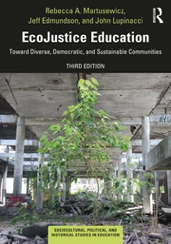
Describes a model for cultural ecological analysis and a pedagogy of responsibility for teachers, teacher educators, and scholars with its theory and classroom practices to help develop citizens who are prepared to support and achieve diverse, democratic, and sustainable societies. Readers are asked to consider curricular strategies to bring these issues to life in their own classrooms across disciplines to examine the larger ideological, social, historical, and political contexts of the crises humans and the planet we inhabit are facing.
Chapter 1: Introduction: The Purposes of Education in an Age of Ecological Crises and Worldwide Insecurities;
Chapter 2: Rethinking Diversity and Democracy for Sustainable Communities;
Chapter 3: Cultural Foundations of the Crisis: A Cultural/Ecological Analysis;
Chapter 4: Learning Anthropocentrism: An EcoJustice Approach to Human Supremacy and Education;
Chapter 5: Learning Androcentrism: An EcoJustice Approach to Gender and Education;
Chapter 6: Learning our Place in the Social Hierarchy: An EcoJustice Approach to Class Inequality and Impoverishment;
Chapter 7: Learning Racism: An EcoJustice Approach to Racial Inequality, co-authored by Gary Schnakenberg;
Chapter 8: Learning about Globalization: Education, Enclosures, and Resistance;
Chapter 9: Learning from Indigenous Communities;
Chapter 10: Teaching for the Commons: Educating for Diverse, Democratic, and Sustainable Communities
See Sustainable principled procedures
by Temple Grandin 277 pages.
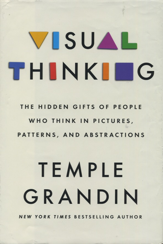
The author reviews three ways of thinking: object visualizers, spatial visualizers, and verbal thinkers. In doing so she prepares the reader for a historic analysis of the topics in the book with respect to visual thinking.
Topics include:
- The relationship of visual thinking to autism.
- The importance of visual thinking and how today’s schools emphasize verbal thinking, which is not only a problem for visual thinkers not being able to succeed at school, but for the country in providing the labor force a modern society needs.
- Support for all these ideas as she analyzes multiple famous people’s work with respects to how they used visual thinking to create novel successful solutions.
- Several design problems and their catastrophic failure, with examples of how visual thinking might have adverted them.
- The relationship of visual thinking in animals to humans and consciousness with references from historical animal studies.
A very good comprehensive introduction to visual thinking.
by RebGregory C. Hutchings, Jr. Douglas S. Reed 134 pages.
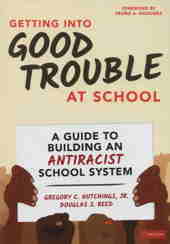
Describes six steps to get into good trouble and provides clear examples for how to achieve it along with supporting research. Also includes references for additional best practices related to the main ideas to build an antiracist school.
Which include:
- Know your history to write your future. The importance of knowing and telling good stories.
- Committing fully to racial equity, by knowing different groups see equity differently, actions of individuals matter deeply, that racism threatens more than education, and racial equity is at the heart of excellent schooling.
- Dismantling tracking and within school segregation.
- Making school discipline different from policing.
- Implement strategic thinking and strategic planning.
- Leading with boldness and courage.
by B ettina L. Love. 162 pages.
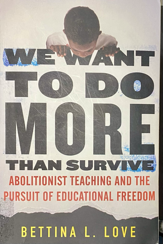
Bettina, describes how institutional racism works to oppress her and other Blacks in America. How her community knew how to support her by supporting theories that explain why doing well is hard.
How something can be more than one thing.
How some are obsessed with opressing others to maintain their status quo. Like with White rage, or patriarchy, homophobia, sexism, transphobia, Islampphobia, classism, abelism, and xenophobia all used to oppress others for the benefit of the oppressors.
Or to believe a system that uses strategies like grit labs and standardized tests will help learners of color survive within a flawed system rather than dismantle it.and helping learners thrive.
If a system is just, then who is to blame for poverty, failing schools, crime, and unemployment?
Believing children fail isn't as beneficial as believing schools fail their learners or gimmicks are needed to improve test scores.
She advocates for abolitionist teaching that focuses on justice, joy, freedom dreaming, and sustainable community change, not just reform.
A pedagogy rooted in radical civic action, Black joy, and celebrating dark students' full humanity.
Abolitionist Teaching: A radical approach inspired by historical abolitionists, aiming to build new, just systems centered on learners' freedom, mattering, and thriving.
It requires teachers to imagine a world without oppression, building co-conspirator relationships, centering Black joy/humanity, and focusing on systemic justice.
Demands educators go beyond traditional reform, teach racial violence, understand systemic racism, and embrace intersectional justice to achieve true educational freedom.
by Fareed Zakaria. 279 pages.
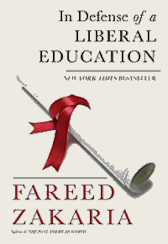
Fareed Zakaria presents information of why a liberal education is necessary. He reviews historically how a liberal eduation has provided the flexibility and diversity of ideas that were used to develop to where we are today. He then makes an argument that a liberal arts education: that teaches how to write clearly, express yourself convincingly, and to think analytically is what will be needed in the future.
He refutes the idea that vocational and routine manufacturing jobs are what people should be training for. That with continued automation and globalization, vocational knowledge becomes both obsolete and outdated. Makinig all lower skilled jobs easily outsourced to cheaper labor markets.
Even professions that will be available for highly trained sectors, like engineers are better served by people who are creativity, lateral thinkers good with design, communication, storytelling, and, more the ability and desire to continually learn and enjoy learning. Precisely the gifts of a liberal education.
by Dana Goldstein. 279 pages.

Goldstein presents historical information of how Jefferson's admonition of education as being necessary for sustaining a democratic government lead to public education as a training place for citizenship and moral development. Preparing the way to later ideas as a means for success, upward mobility, development of a middle class, and later global economic success. How teaching as a profession has suffered from anti-intellectual working class roots, poorly paid teachers initially related to teaching as a feminized job. Positive and negative effects of teacher unions, segregation, integration, court decisions, Standards, No Child Left Behind, TFA, Charter schools, and more.
by William Deresiewicz, 242 pages.
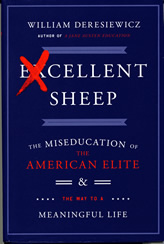
William Deresiewicz, explores what be believes our nation's top schools should be. He believes colleges and universities are creating soulless students: sheep. Who are among the nation's brightest, yet unable to think critically, creatively, and unable to discover a sense of purpose.
He reviews the sins of K-12 schools, parents, counselors, and higher education who demand perfection in meaningless practical outcomes over independence, discovery, critical thinking, and self discovery.
by Diane Ravitch. 325 pages.
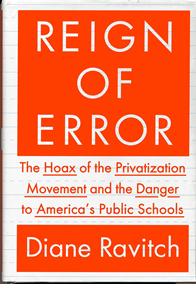
What do the data say about the condition, causes, and possible solutions of America's public schools?
Read why Diane Ravitch has changed from supporting privatization and other current government attempts to supposedly improve public education to saying these attempts are doing the opposite and destroying public education.
by Daniel Wolff. 352 pages.
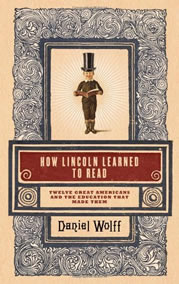 The book is about how 12 different Americans were educated: Benjamin Franklin, Abigail Adams, Andrew Jackson, Sarah Winnemucca Hopkins, Sojourner Truth, Catharine Beecher (Belle), W.E.B. DuBois, Helen Keller, Henry Ford, Rachel Carson, Jack Kennedy, Elvis Presley
The book is about how 12 different Americans were educated: Benjamin Franklin, Abigail Adams, Andrew Jackson, Sarah Winnemucca Hopkins, Sojourner Truth, Catharine Beecher (Belle), W.E.B. DuBois, Helen Keller, Henry Ford, Rachel Carson, Jack Kennedy, Elvis PresleyBeginning with Franklin, Daniel Wolff describes how each of these Americans were educated in what Wolff presents what is needed for a quality education. Most often experiences from outside of a classroom to identify and describe the very purpose of a productive education and how public education does and doesn’t achieve this.
by Howard Gardner. 256 pages.
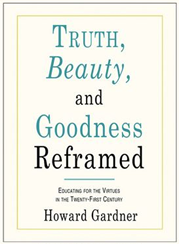
The True, the Good, and the Beautiful are as timeless a trio of concepts as Western culture has to offer. Since before Socrates, humankind has explored these virtues in an attempt to describe and categorize them. Our definitions of these concepts, moreover, have unceasingly changed over the ages and across continents. Every known civilization has developed its own interpretations of them and so has confronted difficult questions: Is truthfulness inherent or inculcated? Is beauty achieved or a gift bestowed by the gods? Is goodness a birthright or determined by society?
In Truth, Beauty, and Goodness Reframed, Howard Gardner explores the meaning of these virtues in a contemporary world of vast technological change and relativistic understandings of human nature. Today's technologically saturated era poses profound challenges to once uncontroversial assertions of what is good. Our search for truth is besieged by a miasma of blogs, forums, and open-source references that obscure the origins of information, and tabloids, cable news, and talk radio that proffer the most convenient, popular, and profitable truths. Our understanding of beauty is bombarded by air-brushed advertisements and Photo-shopped portrayals of perfection. And the concept of the good is increasingly politicized and debated as we determine who is a terrorist and who is a freedom fighter, which liberties are inexorable and which are negotiable in the name of national security.
In this incisive and elucidating study, Gardner reveals that while the concepts of truth, beauty, and the good are changing faster than ever, they are - and will remain - cornerstones of our society. These virtues, though in flux and under attack, are essential to the human experience. While they may be obscured and exploited, we must continue to pursue truth, beauty, and goodness to ever-greater heights. This insightful, illuminating analysis provides an approachable primer on the foundations of ethics and virtue in this modern age.
©2011 Howard Gardner (P)2011 Blackstone Audio, Inc.
by Howard Gardner. 352 pages.
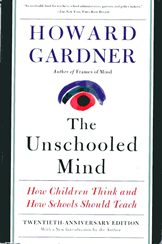
Merging cognitive science with educational agenda, Gardner makes an eloquent case for restructuring our schools by showing just how ill-suited our minds and natural patterns of learning are to the prevailing modes of education. This reissue includes a new introduction by the author.
The failings of schools have been discussed and analyzed from a dazzling array of perspectives. In this study, the author, a professor at the Harvard School of Education and a practitioner of cognitive science based on a theory of multiple intelligences, adopts a credibly innovative approach, contending that even when a school appears to succeed, "it typically fails to achieve its most important missions." The root flaw, as he views it, is a lack of "genuine understanding"--as opposed to "acceptable mastery"--on the student's part. Gardner sees access to better education in the alliance of three potential teammates: the intuitive preschooler, the traditional older child working through a curriculum, and an expert/teacher capable of extending skills and understandings in new ways. One answer to why so many students lose their enthusiasm for school is found here, as well as promising proposals for school reform, like museum collaborations and apprenticeship projects. Gardner's study offers a wealth of material for significant school restructuring.
Copyright 1991 Reed Business Information, Inc. --This text refers to an out of print or unavailable edition of this title.
by Daniel T. Willingham, 192 pages.
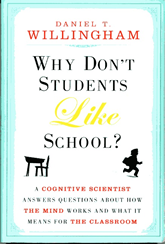
A readable, practical book by a distinguished cognitive scientist who explains the universal roots of effective teaching and learning. With great wit and authority it practices the principles it preaches!
by John Taylor Gatto, 192 pages.
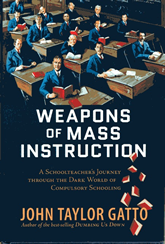
John Taylor Gatto's earlier book introduced that now-famous expression into common vernacular, Dumbing Us Down.
Weapons of Mass instruction adds another chilling metaphor against conventional schooling. In it, he demonstrates that the harm school inflicts is rational and deliberate. The real function of modern pedagogy, he argues, is to render the population manageable.
Filled with examples of people who have escaped the trap of compulsory schooling, Weapons of Mass Instruction shows us that the realization of personal potential requires a different way of growing up and growing competent, one Gatto calls “open-source learning”. Urgent and controversial, this book will appeal to any who harbor doubts about the current education system.
by Dennis Littky, 230 pages.
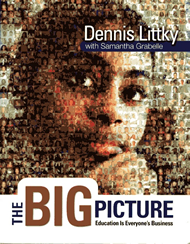
A highly praised bestseller for over a decade, it is a radical treatise on public education that concludes: Compulsory government schooling does little but teach young people to follow orders like cogs in a machine.
What is the purpose of education? What kind of people do we want our children to grow up to be? How can we design schools so students will acquire skills they'll need to live fulfilling and productive lives?
These are a few of the questions the schools Littky has created and led over the past 35 years use to guide their decision making. Schools, which can be models for reformers. Schools where the curriculum is rich, meaningful, and expectations are high with progress measured against real-world standards, and families and communities are actively engaged in the educational process.
The Met exemplifies the Big Picture of personalized learning. In Providence, Rhode Island it is a diverse public high school with the highest rate of attendance and college acceptance in the state.
The Big Picture is a book to reenergize educators, inspire teachers in training, and start a new conversation about kids and schools, what we want for both, and how to make it happen.
by John Taylor Gatto, 144 pages.
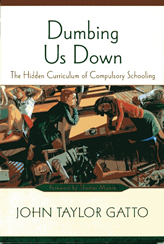
A highly praised bestseller for over a decade, it is a radical treatise on public education that concludes that compulsory government schooling does little but teach young people to follow orders like cogs in a machine.
by David Elkind, 288 pages.
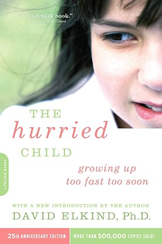
This landmark book is noteworthy in suggesting the consequences of putting too much pressure on young children. Pressures that can lead later childhood and teenage crises. That blurred boundaries of what is age appropriate, too high expectations too soon, expecting kids to grow up too fast.
An obvioously dated book as time continues. However, the premise is still valid and increasingly important as childhood continues to be assulted with pressure for children to achieve more and grow-up in the media, in schools, and at home through the Internet, classroom culture, violence, movies, television, and a growing societal push for individualism rather than cooperation.
The Jewish Week, 6/23/10 “If you want to know more about the harmful effects of micro-managing our children's lives, read The Hurried Child…[Elkind's] main theme remains relevant more than 25 years after its initial publishing.”
Punished by Rewards: The Trouble with Gold Stars, Incentive Plans, A's, Praise, and Other Bribes .... by Alfie Kohn
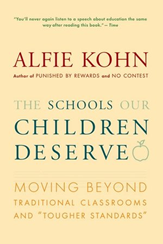
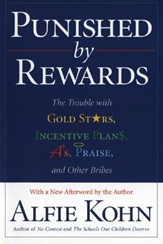
Two landmark books among several written by Alfie.
In Punished by Rewards (1993) he cites thirty years of research showing the more people are rewarded for completing a task, the more they lose interest in that task in the long run.
To review all of his writings check out his website.
For a summary of his ideas on education check out this article with a summary of his main ideas, principle teachings, and key points.
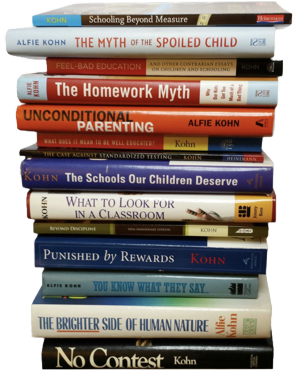
1970 - ...
by Wadsworth, Elkind, Singer, & Revenson.
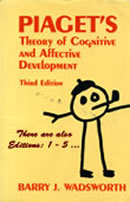
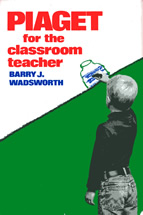
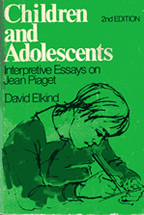
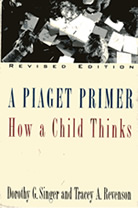
A collection of books that describe Piaget's theory and how to apply his ideas with students in and out of the classroom.
- Piaget's Theory of Cognitive Development. Fifth edition 2003. by Barry J. Wadsworth. A classic on cognitive & affective development. A must read for anyone serious in wanting to understanding learning and how intelligence, logic, and thinking develops cognitively and affectively.
- Piaget for the Classroom Teacher. 1973. by Barry J. Wadsworth
Includes examples of how to use Piaget's learning theory and ideas on cognitive & affective development in the classroom. Source for many of the tasks to explore student development of reasoning, conservation, & logic. - Chidren and Adolescents: Interpretive Essays on Jean Piaget. 1974. by David Elkind.
- A Piaget Primer: How a Child Thinks. Revised edition. 1996.by Dorthy G. Singer & Tracey A. Revenson.
1999
by Esme Raji Codell
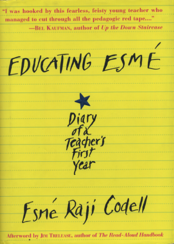
An autobiographical story of Esme Raji Codell s first year teaching. The trials and tribulations she suffered through and that the successes that keep teachers from walking away for their students.
Educational Law
by Justin Driver, 576 pages.
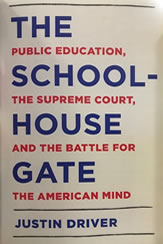
Justin Driver describes the involvement of the courts on schools in American Education. He collects in one volume this judicial history and describes the majority opinion, the dessenting opinion and the background stories of the litigants that brought the suits.
The history shows sometimes there is judicial activism for progressive change, sometimes the courts lag behind the rest of the country, and sometimes they take the lead. However, they have helped expand the rights of American children, however, unevenly and imperfectly they have overall acted for young Americans.
Educational Psychology & Sociology
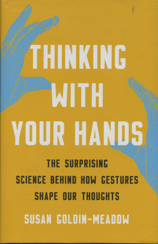
This book will change the way you think about the meaning of gestures that you and other people display while thinking and communicating. Susan explains how gesture is a universal human behavior across every culture and language. How, even if we don't realize it, they are an essential part of our thinking and conversation. Then can reveal our thoughts before we realize them ourselves, our unconscious bias, and signal information about the ideas that may or may not be in our conscious as we conceptualize ideas to understand situations and make choices.
The text includes valuable ideas that can be used as behavioral indicators to assess the progression of children's developmental milestones as well as provide information to better understand progressions of how concepts are being created to better sequence learning activities and instruction.
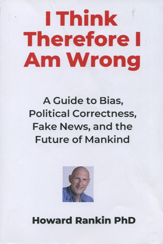
Howard discusses the ideas in the title and combines suggestions for being aware of our thinking process by understanding how our brain works. How it works in a way that creates opportunities for others to influence our biases and our flaws to control our decision making and behavior.
He discusses ways to make wise decisions, control emotions, avoid logical flaws and be logical, along with spiritual training to gain self control to get outside yourself and adopt defensive mechanisms for an authentic life.
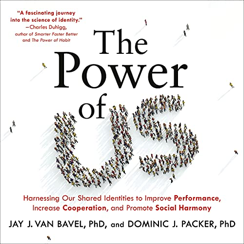
Explains how our individual beliefs and the different associations with have with other people affect and shape the decisions we make.
These explanations are supported with research and suggestions on how to
- Boost cooperation and productivity
- Overcome bias
- Escape from echo chambers
- Break political gridlock
- Foster dissent and mobilize for change
- Lead effectively, and
- Galvanize action to address persistent global problems
Also explains why beliefs persist after they are disproven, how working together synchronizes our brains, what makes selfish people generous, why effective leaders say we a lot, and how cooperative efforts can reduce age old conflicts and turn destructive tribalism constructive.
by Isabel Wilkerson. 496 pages. ISBN-13 : 978-0593230251
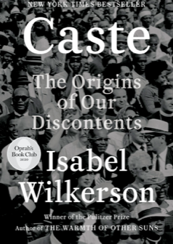
Are you aware of the effects of the caste system on your life?
Isabel Wilkerson identifies, eight pillars of a caste system:
- Divine will and the laws of nature
- Ability to discern heritability
- Endogamy (marrying within the limits of a local community) and control of marriage and mating
- Purity vs. pollution
- Occupational hierarchy
- Dehumanization and stigma. Deny individuality and humanization
- Terror of enforcement, cruelty as a means of control
- Inherent superiority vs inherent inferiority
Knowing and understanding the influences these have on the decisions we make, is necessary to implement justifiable sustainable solutions, without bias to eliminate the oppression and injustice they cast.
- If you can act your way out of it, it's class.
- If you can't act your way out of it, it's caste.
by Robert M. Sapolsky, 717 pages.
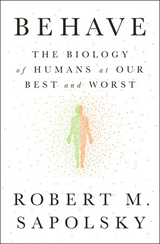
Behave moves from the discussion of single events, genetic, past experience, parenting, ... to a more comprehensive explanation of human behavior. Supported by recent research from many areas: genetics, neuroscience, brain, chemistry, and biology, Robert Sapolsky explores: How much free will we have to make decisions? How is it we can we make very good decisions at times and very bad decisions at times?
His explanations are intricate. We don't just accept or reject a behavior. Like violence, we reject in certain situations and embrace in others. His explanations go beyond simple explanations to consider behaviors as having multiple levels of causality embeded in multiple areas of our brain that reference past and present experiences.
Robert summarizes some main ideas in this TED talk
Pantheon, 2012.
by Leonard Mlodinow. 272 pages.
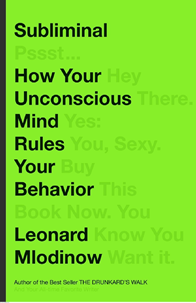
Leonard Mlodinow, the best-selling author of The Drunkard's Walk and coauthor of The Grand Design (with Stephen Hawking), gives us a startling and eye-opening examination of how the unconscious mind shapes our experience of the world and how, for instance, we often misperceive our relationships with family, friends, and business associates, misunderstand the reasons for our investment decisions, and misremember important events.
Your preference in politicians, the amount you tip your waiter—all judgments and perceptions reflect the workings of our mind on two levels: the conscious, of which we are aware, and the unconscious, which is hidden from us. The latter has long been the subject of speculation, but over the past two decades researchers have developed remarkable new tools for probing the hidden, or subliminal, workings of the mind. The result of this explosion of research is a new science of the unconscious and a sea change in our understanding of how the subliminal mind affects the way we live.
Employing his trademark wit and lucid, accessible explanations of the most obscure scientific subjects, Leonard Mlodinow takes us on a tour of this research, unraveling the complexities of the subliminal self and increasing our understanding of how the human mind works and how we interact with friends, strangers, spouses, and coworkers. In the process he changes our view of ourselves and the world around us.
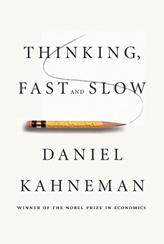
The guru to the gurus at last shares his knowledge with the rest of us. Nobel laureate Daniel Kahneman's seminal studies in behavioral psychology, behavioral economics, and happiness studies have influenced numerous other authors, including Steven Pinker and Malcolm Gladwell. In Thinking, Fast and Slow, Kahneman at last offers his own, first book for the general public. It is a lucid and enlightening summary of his life's work. It will change the way you think about thinking.
Two systems drive the way we think and make choices, Kahneman explains: System One is fast, intuitive, and emotional; System Two is slower, more deliberative, and more logical. Examining how both systems function within the mind, Kahneman exposes the extraordinary capabilities as well as the biases of fast thinking and the pervasive influence of intuitive impressions on our thoughts and our choices. Engaging the reader in a lively conversation about how we think, he shows where we can trust our intuitions and how we can tap into the benefits of slow thinking, contrasting the two-system view of the mind with the standard model of the rational economic agent.
Kahneman's singularly influential work has transformed cognitive psychology and launched the new fields of behavioral economics and happiness studies. In this path-breaking book, Kahneman shows how the mind works, and offers practical and enlightening insights into how choices are made in both our business and personal lives - and how we can guard against the mental glitches that often get us into trouble.
©2011 Daniel Kahneman (P)2011 Random House Audio
“A tour de force. . . Kahneman’s book is a must read for anyone interested in either human behavior or investing. He clearly shows that while we like to think of ourselves as rational in our decision making, the truth is we are subject to many biases. At least being aware of them will give you a better chance of avoiding them, or at least making fewer of them.” (Larry Swedroe, CBS News)
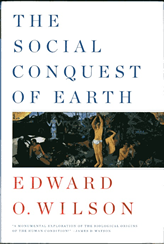
This book investigates three fundamental questions of religion, philosophy, and science: Where did we come from? What are we? Where are we going?
Overturning the famous theory that evolution naturally encourages creatures to put family first. Refashioning group selection, not kin selection, as the primary driving force of human evolution.
He suggests history makes no sense without prehistory, and prehistory makes no sense without biology. Demonstrating that the sources of morality, religion, and the creative arts are fundamentally biological in nature.
Wilson presents us the clearest explanation ever produced as to the origin of the human condition and why it resulted in our domination of the Earth's biosphere.
Bantam Books, 2012.
by Jonathan Haidt. 371 pages.
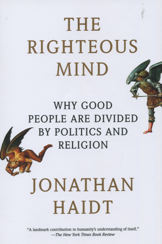
Haidt reviews historical ideas of what people believe is the essential driving force behind how people make decisions. Whether they are basically good or evil and what influences us when we make those different decisions.
He argues moral decisions are more driven by instinctual responses from our genetic inheritance than from rational decision making. He likens decision making to that of an elephant and rider.With the elephant mainly in control, but with the rider able to guide the elephant from time to time.
He describes a moral matrix with six dimensions:
- Care - harm
- Liberty - oppression
- Fairness - cheating
- Loyalty - betrayal
- Autority - subversion
- Sanctity - degradation
And uses them to describe the differences between the left, liberals, libertarians, progressives, conservatives, right
Bantam Books, 2009.
by Daniel Coyle. 256 pages.
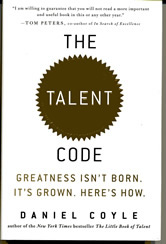
Coyle describes, in an easy to understand style the biophysical development of myelin, which he attributes a direct relationship between growth rings of myelin in brain circuitry to talent or expertise of an individual. An enjoyable collection of stories to document how a Clint Eastwood type of analysis during coached practice that focuses on correction for continual improvement and myelin growth creates talent. Coyle supports this theory with anecdotal examples of talent clusters in soccer, golf, writing, baseball, voice, boarding, and academically. Excellent companion to Mindset: The New Psychology of Success by Carol S. Dweck.
Ballentine Books, New York, 2006.
by Carol S. Dweck. 277 pages.
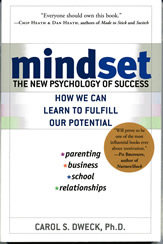
Dweck defines two kinds of mindsets: fixed mindset and growth mindset. People with a fixed mindset think IQ is set at birth and unchangeable. This kind of mindset causes people to protect their image at all costs so they don’t fail, or seen as dumb, worthless, feel like or called an idiot, loser, worthless, and aren’t rejected.
They see effort as useless or a need for it as reinforcing their inability. Success depends on luck. If they fail they are unlucky or there blame their failure on inappropriate interference by others. They choose not to try, stay in bed, get drunk, eat, watch TV, music, pout, fight, cry, break stuff or somebody.
The growth mindset is dynamic. Growth is possible for everyone. What we don’t know is unknown and infinite. If we keep working we can get better. IQ can grow and you can learn and become more skilled. You can change the type of person you are. You love a challenge. Don’t think of failing, but think of getting better, smarter, and love thinking and learning.
Dweck describes, in an easy to understand style, her two kinds of mindsets and the relationships individuals experience that encourage one kind or the other. An enjoyable collection of stories to document famous people and the mindsets they display. She further describes different kinds of interactions that will encourage each of the different mindsets and how to encourage a growth mindset. Excellent companion to The Talent Code: Greatness Isn't Born. It's grown. Here's How, by Daniel Coyle, describes biophysical explanations for brain growth, which applies to both mindsets.
Harper, 1998.
by William Glasser, 340 pages.
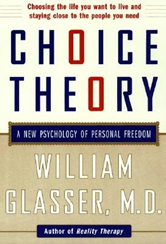
William Glasser, believes all human misery is caused by behavioral psychology where people attempt to control others. He claims, the only behavior we can control is our own, and no one can make another preson do anything they don't want to do.
He believes that when people accept this, then we can stop trying to change others and empower them to make good choices. He supports his ideas with straight forward understandable examples and case studies.
Glasser believes when we take responsibility for our own behavior, we recognize our abilities to change our lives for the better.
Great book to support philosophy to empower students with choice.
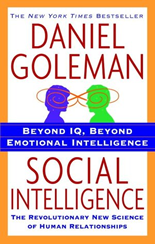
Far more than we are consciously aware, our daily encounters shape our brains and affect cells throughout our bodies. Our reactions to others send out cascades of hormones that regulate everything from our hearts to our immune systems, making good relationships act like vitamins, and bad relationships like poisons.
Here, Daniel Goleman explains how we can use our astonishing capacity for mindsight to answer some of life's most essential questions: Is there a way to raise our children to be happy? What is the basis of a nourishing marriage? How can business leaders and teachers inspire the best in those they lead and teach? How can groups divided by prejudice and hatred come to live together in peace?
Goleman's heartening news is that humans have a built-in bias toward empathy, cooperation, and altruism, provided we develop the social intelligence to nurture these capabilities in ourselves and others.
first edition 1995 ... tenth edition 2005 ...
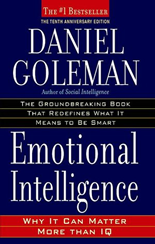
Emotion is the impulses to act that evolution has given us to prepare the body for a response. He notes that while in the ancient past a quick response provides an edge for survival, today it too often results in a disastrous reaction.
Therefore, the problem is not emotionality, but the appropriateness of emotions and how we express them. How to bring intelligence to our emotions and civility and caring to our communal life.
It should be apparent the power of emotions is shortsighted as many decisions are often based on a feeling more often than thought. We have over rated the value of a purely rational IQ for decision making. When emotions take over, Intelligence is put on hold, and passions overcome reason time and again.
He includes skills and how to acquire them to make better decisions based on new ways to look at how emotions can cause family and society ills and how to make better choices to more successful.
The book includes five parts:
- The emotional brain
- The nature of emotional intelligence
- Emotional intelligence applied 4
- Windows of opportunity and 5
- Emotional literacy
by Michael R. LeGault. Threshold Editions, 2006. 355 pages.

Outraged by the downward spiral of American intellect and culture, Michael R. LeGault offers the flip side of Malcolm Gladwell's best-selling phenomenon, Blink, which celebrated impulse thinking over factual knowledge or critical analysis. If best-selling books are advising us to not think, LeGault argues, it comes as no surprise that sharp, incisive reasoning is on the decline, leading our society to incompetence and failure.
LeGault talks about:
Permissive parenting and low standards that have caused an academic crisis among our children, body weights rise while grades plummet. A culture of image and instant gratification, fed by reality shows and computer games, that has rendered curiosity of the mind and spirit all but obsolete.
Stress, aversion to taking risks, and therapy that are replacing the traditional American "can do" mind-set.
Far from perpetuating the stereotype of the complacent American, LeGault maintains that Americans are abundantly gifted with the ability to fulfill our nation's greatest potential starting today but we need smart teachers, health care workers, sales representatives, students, mechanics, and leaders to make it happen. A bracing wake-up call to America, Think! delivers a no-holds-barred prescription for reversing the erosion of American civilization.
©2006 Michael R. LeGault; (P)2006 Simon & Schuster, Inc. SOUND IDEAS is an imprint of Simon & Schuster Audio Division, Simon & Schuster Inc.

Forget everything you thought you knew about how to motivate people--at work, at school, at home. It's wrong. As Daniel H. Pink explains in his new and paradigm-shattering book, the secret to high performance and satisfaction in today's world is the deeply human need to direct our own lives, to learn and create new things, and to do better by ourselves and our world.
Drawing on four decades of scientific research on human motivation, Pink exposes the mismatch between what science knows and what business does - and how that affects every aspect of our lives. He demonstrates that while the old-fashioned carrot-and-stick approach worked successfully in the 20th century, it's precisely the wrong way to motivate people for today's challenges. In Drive, he reveals the three elements of true motivation:
Autonomy - the desire to direct our own lives
Mastery - the urge to get better and better at something that matters
Purpose- the yearning to do what we do in the service of something larger than ourselves
Along the way, he takes us to companies that are enlisting new approaches to motivation and introduces us to the scientists and entrepreneurs who are pointing a bold way forward.
Drive is bursting with big ideas-- the rare book that will change how you think and transform how you live.
©2009 Daniel H. Pink; 2009 Penguin

In this stunning new book, Malcolm Gladwell takes us on an intellectual journey through the world of "outliers"--the best and the brightest, the most famous and the most successful. He asks the question: what makes high-achievers different? His answer is that we pay too much attention to what successful people are like, and too little attention to where they are from: that is, their culture, their family, their generation, and the idiosyncratic experiences of their upbringing. Along the way he explains the secrets of software billionaires, what it takes to be a great soccer player, why Asians are good at math, and what made the Beatles the greatest rock band.
Brilliant and entertaining, Outliers is a landmark work that will simultaneously delight and illuminate.
©2008 Malcom Gladwell; (P)2008 Hachette Audio
Back Bay Books, 2002 .
by Malcolm Gladwell, 301 pages.
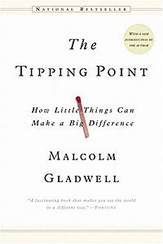
Why did crime in New York drop in the mid-90s? Why is teenage smoking out of control? Why are television shows like Sesame Street good at teaching kids how to read?
New Yorker writer Malcolm Gladwell looks at why major changes in society happen suddenly and unexpectedly. Just as a single sick person can start an epidemic of the flu, so too can a few fare-beaters and graffiti artists fuel a subway crime wave, or a satisfied customer fill the empty tables of a new restaurant. These are social epidemics, and the moment when they take off, when they reach their critical mass, is the Tipping Point.
Gladwell uncovers the personality types who are natural pollinators of new ideas and trends. He analyzes fashion trends, smoking, children's television, direct mail and the early days of the American Revolution for clues about making ideas infectious.
The Tipping Point is an intellectual adventure story with an infectious enthusiasm for the power and joy of new ideas. Most of all, it is a road map to change, with a profoundly hopeful message: that one imaginative person applying a well-placed lever can move the world.
©2007 Malcolm Gladwell; 2007 Hachette Audio
Littel, Brown & Co, 2005.
by Malcolm Gladwell, 277 pages.

In his landmark best seller The Tipping Point, Malcolm Gladwell redefined how we understand the world around us. Now, in Blink, he revolutionizes the way we understand the world within. Blink is a book about how we think without thinking, about choices that seem to be made in an instant, in the blink of an eye, that actually aren't as simple as they seem. Why are some people brilliant decision makers, while others are consistently inept? Why do some people follow their instincts and win, while others end up stumbling into error? How do our brains really work, in the office, in the classroom, in the kitchen, and in the bedroom? And why are the best decisions often those that are impossible to explain to others?
In Blink we meet the psychologist who has learned to predict whether a marriage will last, based on a few minutes of observing a couple; the tennis coach who knows when a player will double-fault before the racket even makes contact with the ball; the antiquities experts who recognize a fake at a glance. Here, too, are great failures of "blink": the election of Warren Harding; "New Coke"; and the shooting of Amadou Diallo by police.
Blink reveals that great decision makers aren't those who process the most information or spend the most time deliberating, but those who have perfected the art of "thin-slicing", filtering the very few factors that matter from an overwhelming number of variables.
Drawing on cutting-edge neuroscience and psychology and displaying all of the brilliance that made The Tipping Point a classic, Blink changes the way you understand every decision you make. Never again will you think about thinking the same way.
Don't miss any of Malcolm Gladwell's books, articles, and interviews.
©2005 Malcolm Gladwell; (P)2005 Time Warner Audio Books
Columbia University Press, 2007.
by Bill Dugan, 176 pages.
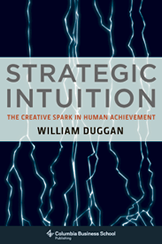
How "Aha!" really happens.....
When do you get your best ideas? You probably answer "At night" or "In the shower" or "Stuck in traffic". You get a flash of insight. Things come together in your mind. You connect the dots. You say to yourself, "Aha! I see what to do."
Brain science now reveals how these flashes of insight happen. It's a special form of intuition. We call it strategic intuition, because it gives you an idea for action - a strategy.
This new book by William Duggan is the first full treatment of strategic intuition. It's the missing piece of the strategy puzzle that makes essential reading for anyone interested in achieving more in any field of human endeavor.
©2007 Columbia University Press; (P)2008 Audible, Inc.
Riverhead Books 2005.
by Daniel H. Pink, 304 pages.
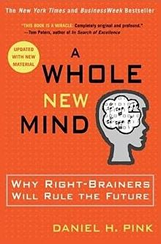
Lawyers. Accountants. Software Engineers. That's what Mom and Dad encouraged us to become. They were wrong. Gone is the age of "left-brain" dominance. The future belongs to a different kind of person with a different kind of mind: designers, inventors, teachers, storytellers - creative and emphatic "right-brain" thinkers whose abilities mark the fault line between who gets ahead and who doesn't.
Drawing on research from around the advanced world, Daniel Pink outlines six fundamentally human abilities that are essential for professional success and personal fulfillment - and reveals how to master them.
From a laughter club in Bombay to an inner-city high school devoted to design, to a lesson on how to detect an insincere smile, A Whole New Mind takes listeners to a daring new place, and offers a provocative and urgent new way of thinking about a future that has already arrived.
©2005 Daniel H. Pink; (P)2008 Audible, Inc.
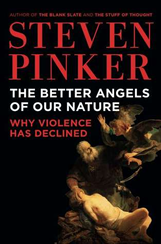
Steven Pinker describes human violence past to present. Concluding we are living in the most peaceable era of our species' existence.
Other books by Steven Pinker:
- The Language Instinct: How the Mind Creates Language
- The Blank Slate: The Modern Denial of Human Nature
- How the Mind Works
- The Stuff of Thought: Language as a Window Into Human Nature
- Learn ability and Cognition: The Acquisition of Argument Structure
- What Is Your Dangerous Idea?: Today's Leading Thinkers on the Unthinkable
by Stuart Sutherland, 357 pages.
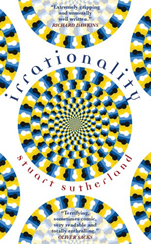
Sutherland explains how doctors, generals, civil servants and others consistently make wrong decisions that cause enormous harm. Irrational beliefs and behaviors are virtually universal. He analyzes causes of irrationality and why we are irrational, different kinds of irrationality, the damage it does us and possible cures.
by Naoki Higashida, translated by David Mitchell, 135 pages.
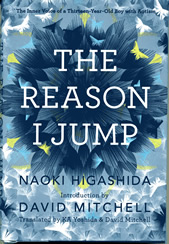
Naoki Higashida, is autistic and 13 when he writes a story telling about how he thinks, feels, perceives, and responds to life. He uses an alphabetical grid to constructs words and sentences to tell his story, which he is unable to tell aloud. He answers questions that everyone who has interacted with an autistic person asks: why they talk loud and weirdly, why they need to move, why they may not make eye contact, and more. Information everyone needs to know in an easy to read enlightening book.
Management & education
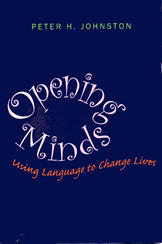
Grounded in research, Johnson explains how words shape students' learning, their sense of self, and their social, emotional and moral development. Make no mistake: words have the power to open minds – or close them.
In his chapter on praise he points out how praise, a popular approach believed by many to enhance self-esteem, has its downsides by keeping us in an external motivational system of rewards and punishment. He gently leads the reader to the greater value of taking interest in student process toward productive learning. By asking questions to probe the depth and structure of student learning and knowledge toward a productive goal you take a caring interaction that demonstrates a dynamic view of knowledge and learning that leads to intrinsic rewards from the experience.
Everyone should benefit from this book by learning how to engage children with more productive talk and create classrooms that support students' intellectual development as well as their emotional and social that will benefit their futures far better than sticks and carrots.
by Ruth Sidney Charney, 448 pages.
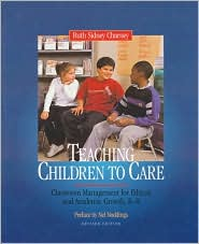
"Charney, offers educators a practical guide to one of the most effective social and emotional learning programs I know of." Daniel Goleman, author of Emotional Intelligence.
Ruth Charney gives teachers help on things that really matter. She wants children to learn how to care for themselves, their fellow students, their environment, and their work. Her book is loaded with practical wisdom. Using Charney's positive approach to classroom management will make the whole school day go better. --Nel Noddings, Professor Emeritus, Stanford University I spent one whole summer reading Teaching Children to Care. It was like a rebirth for me. This book helped direct my professional development. After reading it, I had a path to follow. I now look forward to rereading this book each August to refresh and reinforce my ability to effectively manage a social curriculum in my classroom. --Gail Zimmerman, second-grade teacher, Jackson Mann Elementary School, Boston, MA
Simon & Schuster, 1994...
by Mel Levine, 352 pages.
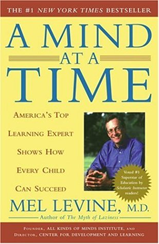
Levine, claims school is a problem for many children, because most schools cling to a one-size-fits-all educational philosophy. As a result, children struggle because their learning patterns don't fit the schools. Levine, explains how to identify individual learning patterns. How parents and teachers can encourage a child's strengths and by pass weaknesses. Teaching that produces satisfaction and achievement instead of frustration and failure.
Levine explains eight fundamental systems, or components, of learning that draw on a variety of neurodevelopmental capacities. Some students are strong in some areas and others are strong in different areas, but no one is equally capable in all eight. Levine shows how to identify individual learning styles. Some are creative and write imaginatively but do poorly in history because weak memory skills prevent them from retaining facts. Some are weak in sequential ordering and can't follow directions. They may test poorly and often don't do well in mathematics. In these cases, Dr. Levine observes, the problem is not a lack of intelligence but a learning style that doesn't fit the assignment.
Levine shows how to develop effective strategies to work through or around these weaknesses. Learning begins in school but it doesn't end there. Frustrating a child's desire to learn will have lifelong repercussions. Frustration can be avoided if we understand not every child can do equally well in every type of learning. If we will pay more attention to individual minds, we will maximize children's learning potential. In A Mind at a Time he shows us how.
by John W. Maag, 113 pages.
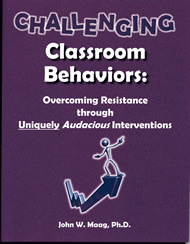
Maag, Introduces his strategic approach and eight principles that underly it. He goes on to provide explanations for why students say no and why teachers say no. This discussion reviews positive and negative reinforcement and punishment and reward.
He touches on how to use reinforcement contracts and then moves on to the main topic of the book: overcoming resistance with audacious interventions. He does so with discussin on how to create rapport p. 46 & 47, mirror students, provide high probability directives, suggestions on how to overcome change p. 39, and suggests patterns of interaction. His most notable is putting students into a double bind by offering what they want, which will cause them to act positively on a teacher request or if they refuse put them into compliance of the initial request. Then using either result to build momentum.
by Jerome Bruns, 240 pages.
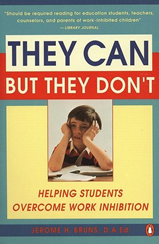
Ever wonder why seemingly capable kids choose not to do participate and achieve? If so, this is book is a must read. Interesting and very helpful in presenting alternative solutions to ideas that have been tried and failed.
Shirley L. Hopkinson. "As many as 20 percent of American public school students may be work inhibited, that is, unable to complete assignments. They have the intellectual capability to understand concepts and have no discernible learning disabilities, yet they cannot work on their own. Burns reports on several studies he made of such children, describing their characteristics and family patterns. He concludes that low self-esteem and passive aggression are primary causes. He also finds many subjects to be guilt-ridden, fearful, apprehensive, and shy. Illustrating his points with case studies, he explains what educators and parents can do to help. This book should be required reading for education students, teachers, counselors, and parents of work-inhibited children." SLIS, San Jose State Univ., Cal.
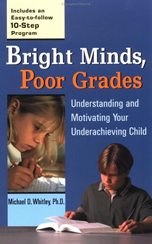
This book
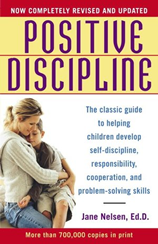
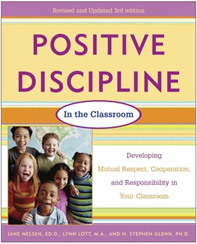
These books
Other books of interest to educators
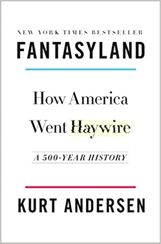
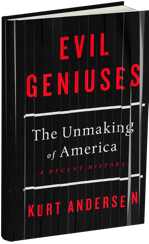
As the American economy and social systems become more and more prosperous. A huge, secure, and contented middle class emerges. All boats rose together. But then the New Deal gave way to the Raw Deal. A long war conceived of and executed by a confederacy of big business CEOs, the superrich, and right-wing zealots in executed in the 1970's.
It undermines and dismantles the rules and norms that made the American middle class possible. Turning back a century of economic progress, making greed good, workers powerless, and the market all-powerful while weaponizing nostalgia, lifting up an oligarchy that served only its own interests, and leaving the huge majority of Americans with dwindling economic prospects and hope.
Andersen explains why and how America took such a wrong turn
A provocative, and eye-opening history of America’s undoing, naming names, showing receipts, and unsparingly assigning blame to the radical right in economics and the law, the high priests of high finance, a complacent and complicit Establishment, and liberal useful idiots among whom he includes himself.
Fantasyland: The History of America's Irrationality.
Kurt Andersen makes sense of America’s current post-factual, post-truth, fake news moment? By looking way back into America’s past. Wishful dreams and make-believe fears of the country’s first settlers, the madness of the Salem witch trials, the fantasies of Hollywood, the anything-goes 1960s, the gatekeeper-free internet, the profusion of reality TV …. all the way up to Trump.
Kurt Andersen brings to life with research and profound implications a fresh way to define America’s character. Our religious fanatics, talk radio rabble rousers, online conspiracy theorists ... WHo exploit our susceptibility to fantasy..
See video (49:49)
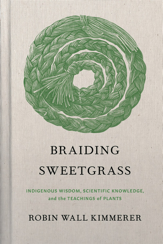
Robin Wall Kimmerer is a member of the Citizen Potawatomi Nation and a botanist. In Braiding Sweetgrass, Robin combines traditional stories of plants and animals with emerging science knowledge to add support for the teachings within these oral stories. Together they support can an awakening of an ecological consciousness needed to acknowledge and celebrate a reciprocal relationship with the living world to create a sustainable relationship.
Only when we hear the languages of other beings are we capable of understanding the generosity of the earth, and learn to give our own gifts in return.
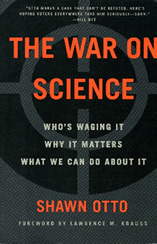
If you have wondered why it has become so popular for people to reject scientific ideas and the benefits they provide, then this groundbreaking and fascinating book provides insight.
Shawn Otto investigaes and describes the rises and falls of science over the centuries and more importantly, for us, the decline of fact based scientific reasoning the last few decades.
Shawn describes how many Americans have become antiscience. More importantly among them are politicians, business owners, investors, industrial leaders, journalists, and scientists themselves.
His careful research and insightful descriptions to counter misconceptions on: radiation, GMO's, vaccinations, climate, and much more can help us understand how people's misconceptions and fears can be exploited to manipulate them and lead them to deny good science.
Science, which is necessary to know how to use facts in a scientific manner to make better decisions than decisions made based on emotions and nonsense.
Decisions that are based on reproducible verifiable facts and scientific reasoning; that are communicated in a manner to help people overcome their fears, created with misconceptions, and replace them with sound, fact based, scientifically reasoned explanations in a manner they can understand and be able to confidently accept and act on repeatedly for theirs and others benefits.
The author describes how this might be achieved so we might again have greater confidence in using science to make decisions that will benefit our children and grandchildren and sustain a habitable Earth.

A groundbreaking and fascinating investigation into the transformative effects of exercise on the brain, from the bestselling author and renowned psychiatrist John J. Ratey, MD.
Did you know you can beat stress, lift your mood, fight memory loss, sharpen your intellect, and function better than ever simply by elevating your heart rate and breaking a sweat? The evidence is incontrovertible: Aerobic exercise physically remodels our brains for peak performance.
In Spark, John J. Ratey, M.D., embarks upon a fascinating and entertaining journey through the mind-body connection, presenting startling research to prove that exercise is truly our best defense against everything from depression to ADD to addiction to aggression to menopause to Alzheimer's. Filled with amazing case studies (such as the revolutionary fitness program in Naperville, Illinois, which has put this school district of 19,000 kids first in the world of science test scores), Spark is the first book to explore comprehensively the connection between exercise and the brain. It will change forever the way you think about your morning run---or, for that matter, simply the way you think.
©2008 John J. Ratey; (P)2008 Gildan Media Corp.
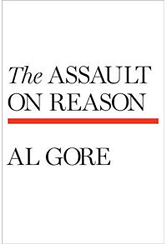
Here is a visionary analysis of how the politics of fear, secrecy, cronyism, and blind faith have combined with the degradation of the public sphere to create an environment dangerously hostile to reason.
At the time George W. Bush ordered American forces to invade Iraq, 70 percent of Americans believed Saddam Hussein was linked to 9/11. Voters in Ohio, when asked by pollsters to list what stuck in their minds about the recent campaign, most frequently named two Bush television ads that played to fears of terrorism.
We live in an age when the 30-second television spot is the most powerful force shaping the electorate's thinking, and America is in the hands of an administration less interested than any previous administration in sharing the truth with the citizenry. Related to this and of even greater concern is this administration's disinterest in the process by which the truth is ascertained, the tenets of fact-based reasoning - first among them an embrace of open inquiry in which unexpected and inconvenient facts can lead to unexpected conclusions.
How did we get here? How much damage has been done to the functioning of our democracy and its role as steward of our security? Never has there been a worse time for us to lose the capacity to face the reality of our long-term challenges, from national security to the economy, from issues of health and social welfare to the environment. As
The Assault on Reason explains, we have precious little time to waste.
Drawing on a life's work in politics, as well as on the work of experts across a broad range of disciplines, Al Gore has written a farsighted and powerful manifesto for clear thinking.
©2007 Al Gore; (P)2007 Penguin Audio, a member of Penguin Group (USA), Inc.
Simon & Schuster, 2001.
by Andrew Hill with John Wooden, 192 pages.
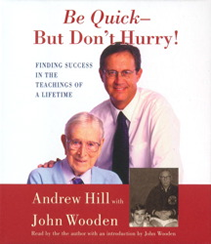
Perhaps the least controversial sports honor in living memory was the selection of John Wooden as "Coach of the Century" by ESPN. Wooden presided over college sports' most famous dynasty, winning 10 NCAA basketball championships in 12 years. His UCLA teams won with quickness, and always with class. Wooden was a teacher first and foremost, and his lessons - taught on the basketball court, but applicable throughout one's life - are summarized in his famed Pyramid of Success.
An all-city high school player in Los Angeles, Andrew Hill played - a little - in three national championships, from 1970 to 1972. At that time, Hill was upset at how unequally Wooden treated his starting players, and clashed with Wooden over a variety of social and political issues.
Hill went on to a successful career in television, rising to the presidency of CBS Productions. And one day, some 25 years after graduating from UCLA, he realized that everything he knows about getting the best out of his people he had learned directly from Coach John Wooden.
Be Quick - But Don't Hurry! tells the story of their renewed friendship, while sharing the lessons and secrets that hold the key to managing creativity in the idea-driven economy of the 21st century. Full of sound advice and warm reminiscence, this is the management audiobook of a lifetime.
©2001 Andrew Hill, All Rights Reserved; 2001 Simon & Schuster, Inc., All Rights Reserved
by Jonathan Haidt, 320 pages.
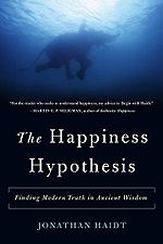
This is a book about 10 "Great Ideas". Each chapter is an attempt to savor one idea that has been discovered by several of the world's civilizations - to question it in light of what we now know from scientific research, and to extract from it the lessons that still apply to our modern lives. ©2006 Jonathan Haidt; (P)2007 Gildan Media
"I don't think I've ever read a book that laid out the contemporary understanding of the human condition with such simple clarity and sense." (The Guardian, UK)
"A delightful book...by some margin the most intellectually substantial book to arise from the 'positive psychology' movement." (Nature)
"Fascinating stuff, accessibly expressed." (Booklist)
Home: Pedagogy - theory, curriculum, learning, human development, & teaching
Liveright, 2012.
by Edward O. Wilson, 352 pages.